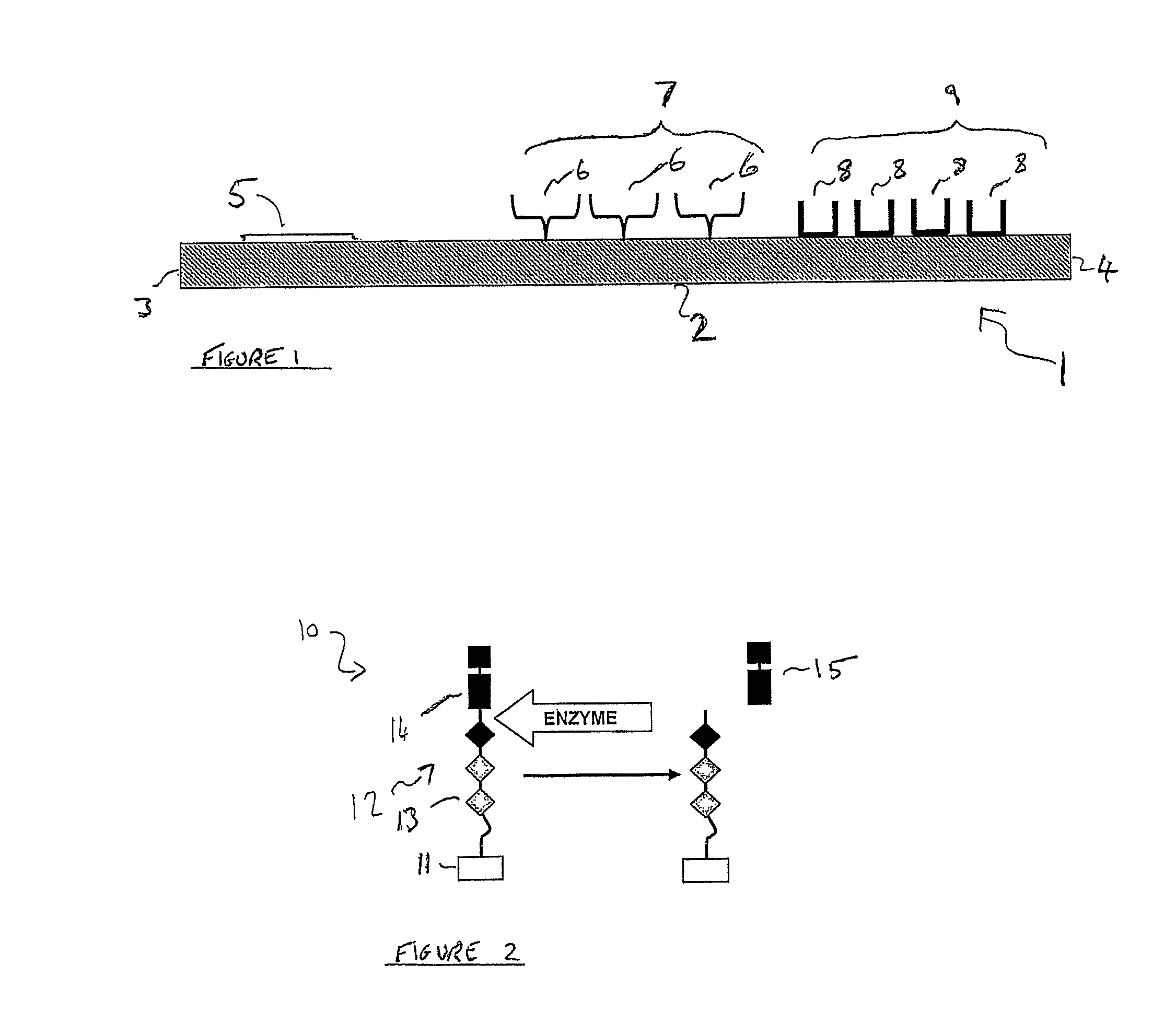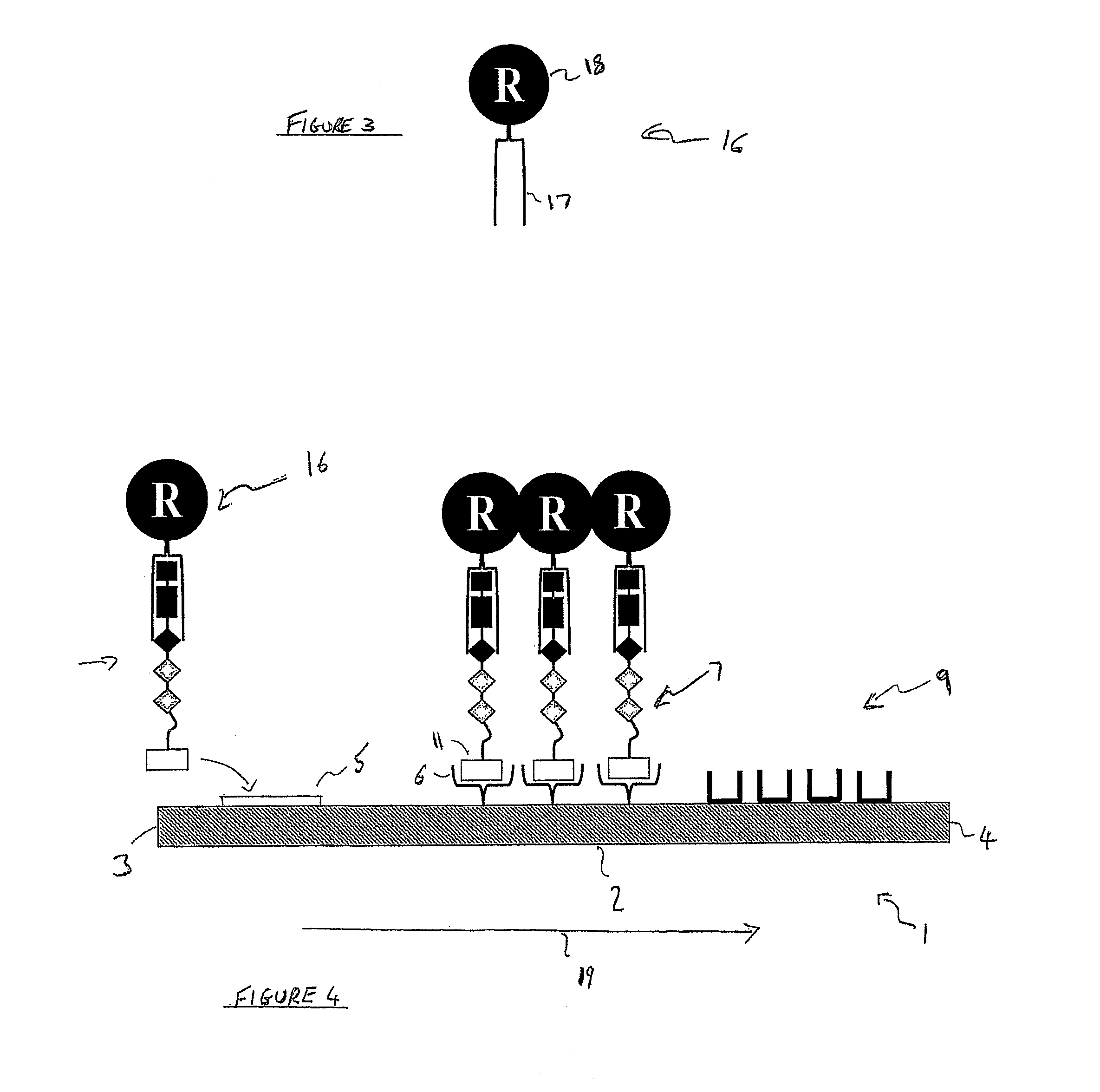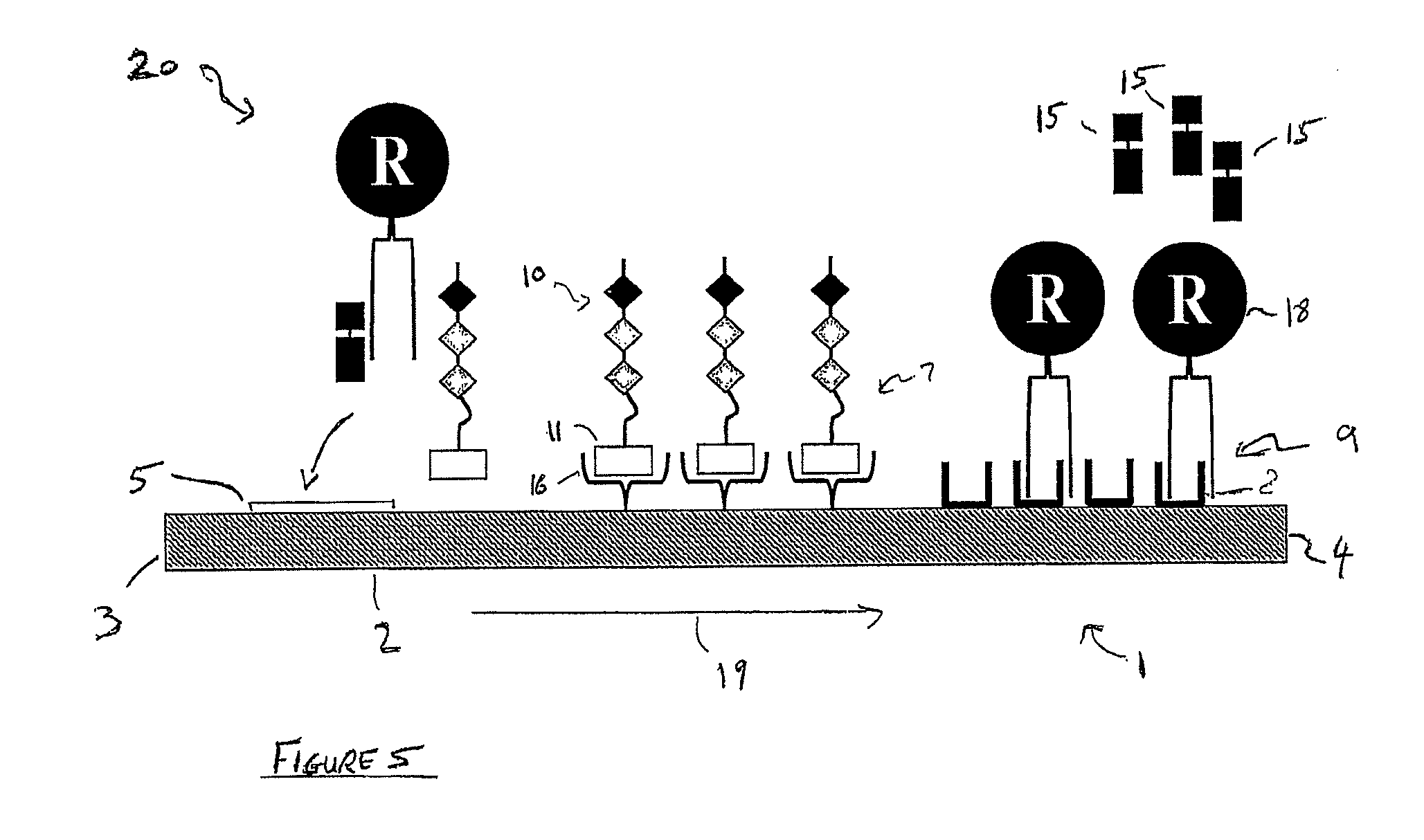Enzyme detection device
a detection device and enzyme technology, applied in the field of enzyme detection devices, can solve the problems of inability to detect enzymes, inability to detect enzyme activity, and inability to give accurate kits, etc., and achieve the effects of low dissociation rate (kd), high turnover, and low cos
- Summary
- Abstract
- Description
- Claims
- Application Information
AI Technical Summary
Benefits of technology
Problems solved by technology
Method used
Image
Examples
example 1
[0099]A kit comprises the following components:—
[0100]1) A swab on a stem for the collection of a sample fluid (e.g. from a wound).
[0101]2) A lateral flow test-strip, which is mounted in a plastic case. The test strip has a first detection zone which comprises streptavidin adsorbed as a first test line across the flow-path of the test strip and a second detection zone which comprises anti-sheep antibodies adsorbed as a second test line across the flow-path of the test strip, downstream of the first test line. There is an observation window in the plastic case through which to view the first and second test lines. There is also an integrated sample receiving pad, upstream of the first test line. In addition, the test strip has gold particles bearing sheep antibodies (substrate recognition molecules) dried into the test strip between the sample-receiving pad and the first test line or dried into the sample-receiving pad itself.
[0102]3) A test tube, in which the swab may be placed, tog...
PUM
| Property | Measurement | Unit |
|---|---|---|
| luminescent | aaaaa | aaaaa |
| size | aaaaa | aaaaa |
| catalytic activity | aaaaa | aaaaa |
Abstract
Description
Claims
Application Information
 Login to View More
Login to View More - R&D
- Intellectual Property
- Life Sciences
- Materials
- Tech Scout
- Unparalleled Data Quality
- Higher Quality Content
- 60% Fewer Hallucinations
Browse by: Latest US Patents, China's latest patents, Technical Efficacy Thesaurus, Application Domain, Technology Topic, Popular Technical Reports.
© 2025 PatSnap. All rights reserved.Legal|Privacy policy|Modern Slavery Act Transparency Statement|Sitemap|About US| Contact US: help@patsnap.com



